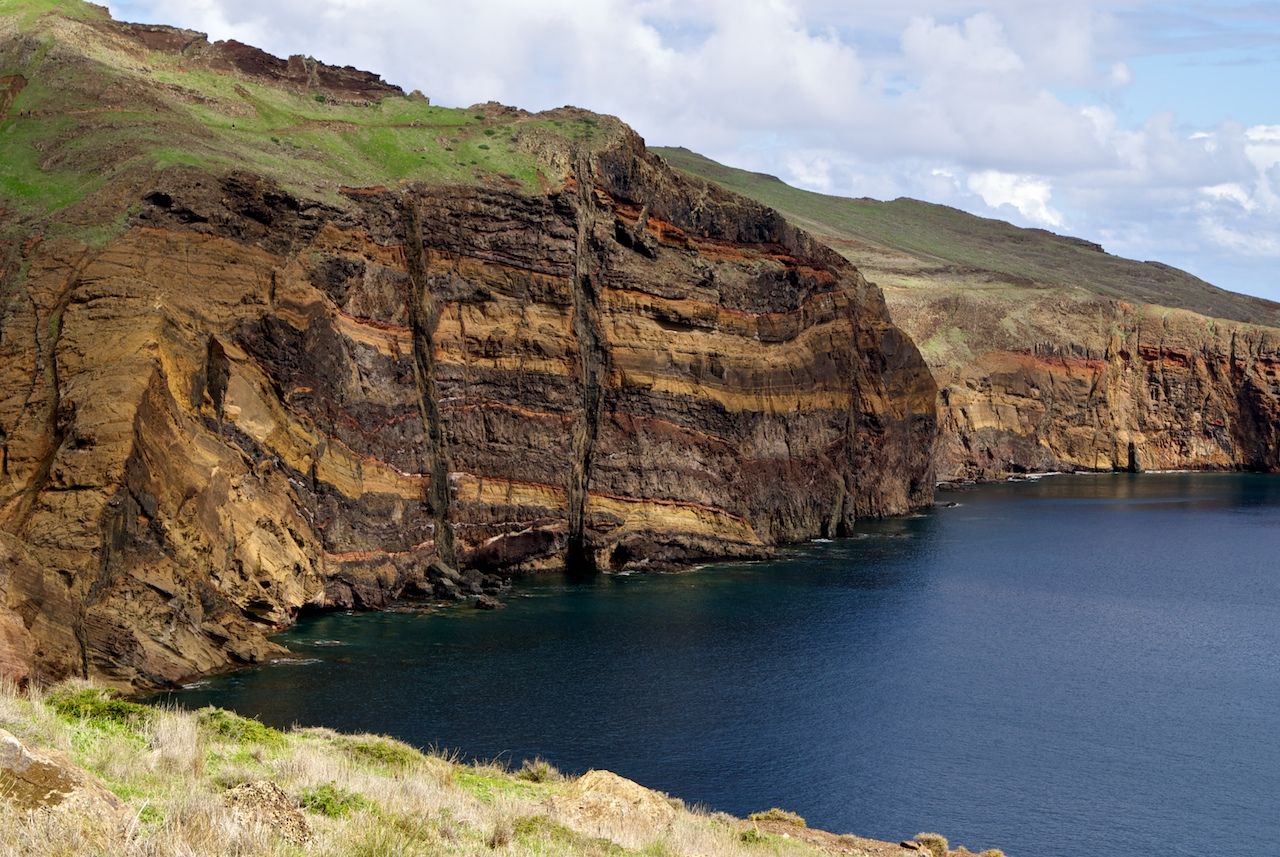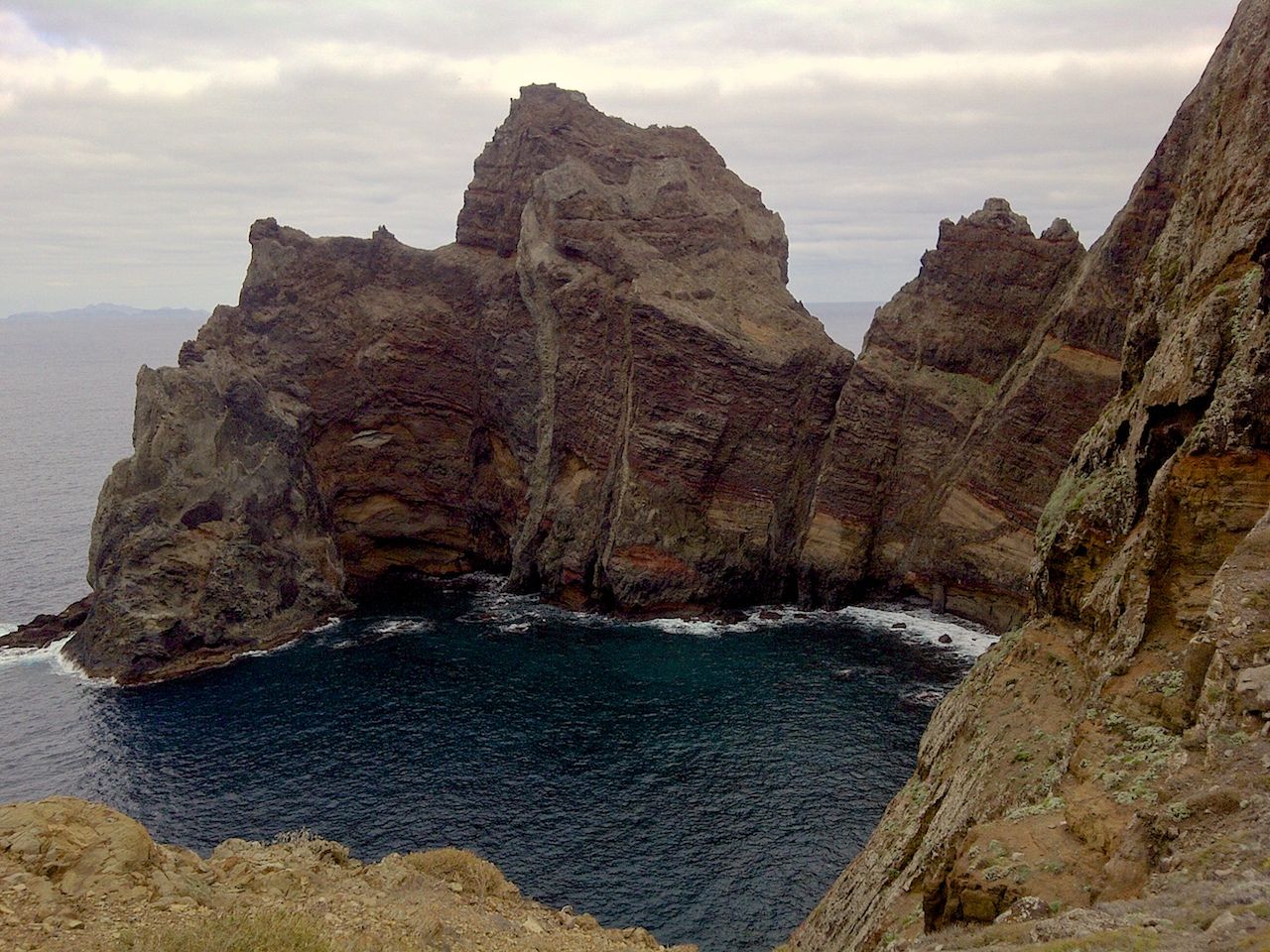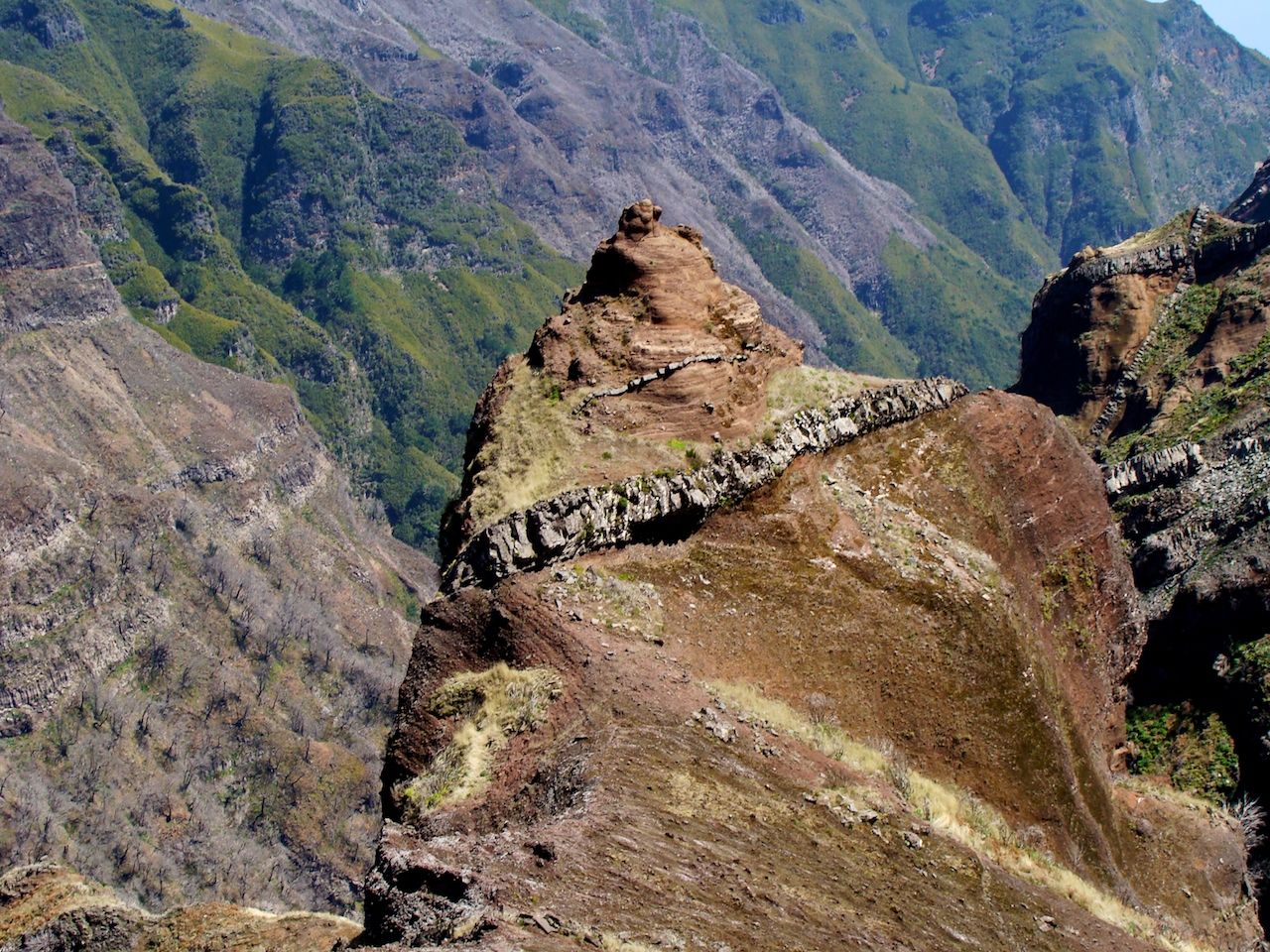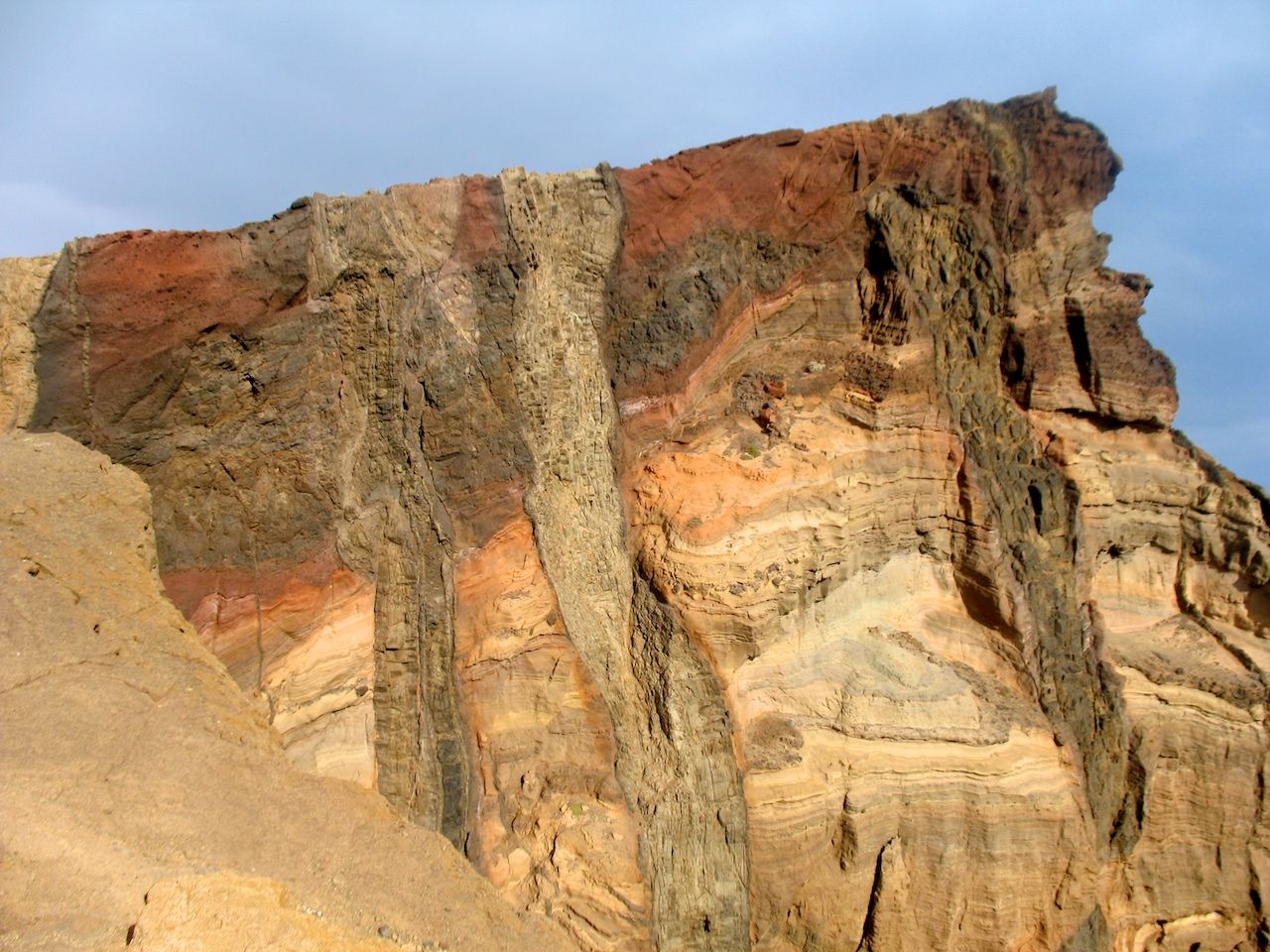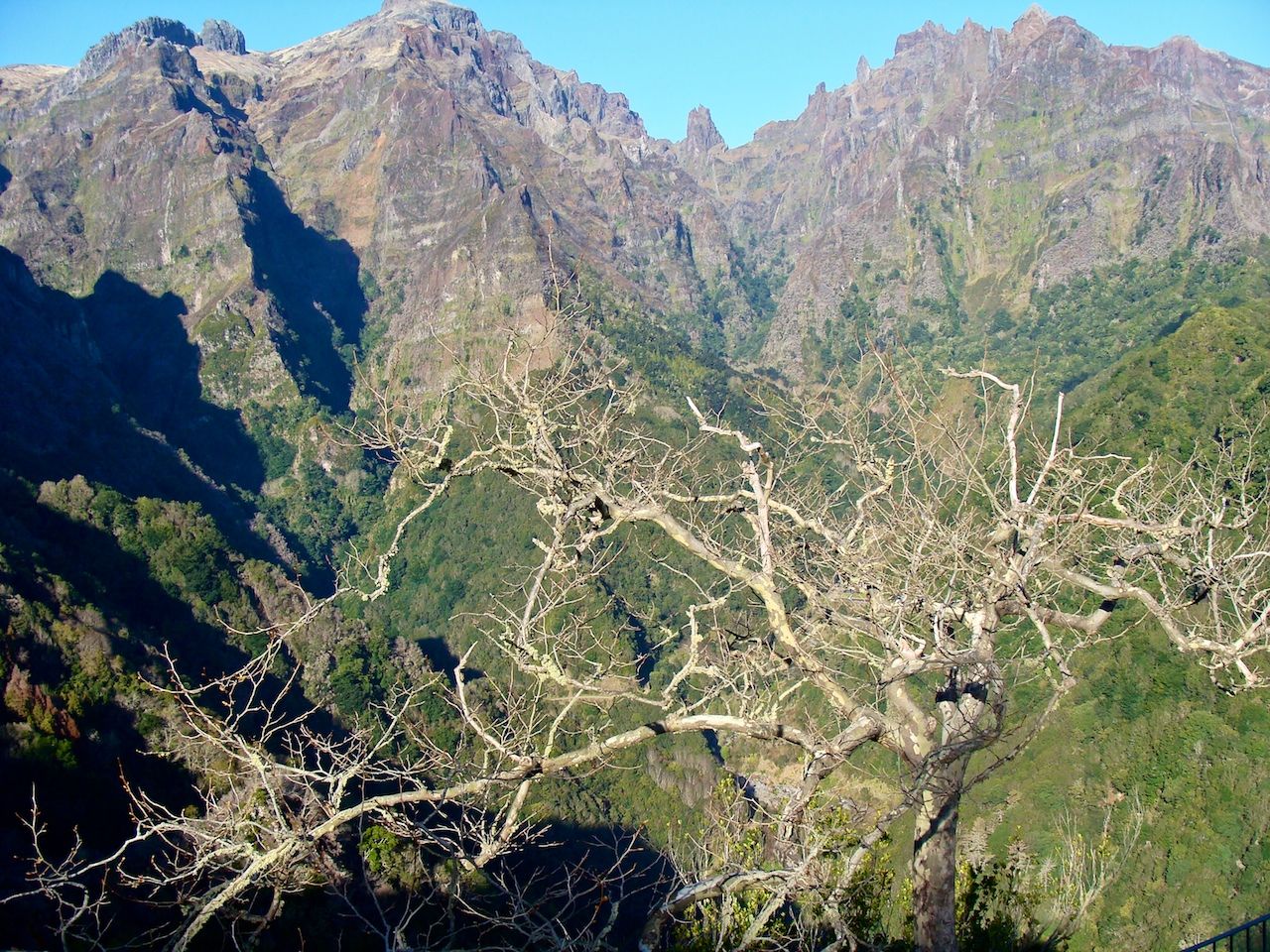Geology
Since Madeira was formed in several volcanic phases, the first began about 18 million years ago, the last ended only about 6,450 years ago, the exact location of each crater is no longer discernible. Remains can be seen in many places in the interior of the island. Impressive are the former sluices of the volcanoes, which unlike the surrounding rock have not yet been eroded by the erosion. In some places in the high mountains you can also see striking mountain tops or rocky cliffs.
The rivers of the island usually have a very steep gradient. Numerous waterfalls lead directly to the sea.
Click on the pictures for an enlarged view.
The Pico Ruivo is with 1862 m the highest peak of Madeira and at the same time one of the highest peaks of Portugal. The coast of Madeira is steep and rocky. Cabo Girão, the "Cape of Inversion", is the highest cliff in Europe with a height of 580m. Fajã was the name of the hard-to-reach fertile headlands, which served as arable land as well as the small fertile high plateaus, the Achadas.
Did you know?
Santana-lodges
These Casa de Colmo are worth a visit!
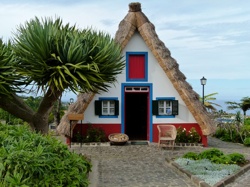
In Santana, the colorful, unusual houses are one of Madeira's attractions. In the small park next to the town hall, the municipality of Santana has rebuilt some of the small houses and promotes their preservation. About 100 of these, also called beehive sheds, are still around Santana. The Casa de Colmo were until a few decades ago, the traditional house of farmers in many island towns. The small gabled, thatched roofs reached down to the ground. The colorfully painted front of the Casas is made of wood.

The Casa de Colmo were born from the distress and remoteness of the Madeirans on the north coast. Wood was in abundance - straw was also there enough after the threshing. The interior was more than modest, the real life like cooking took place outside. Today the tourism center is housed in one of the cottages.


